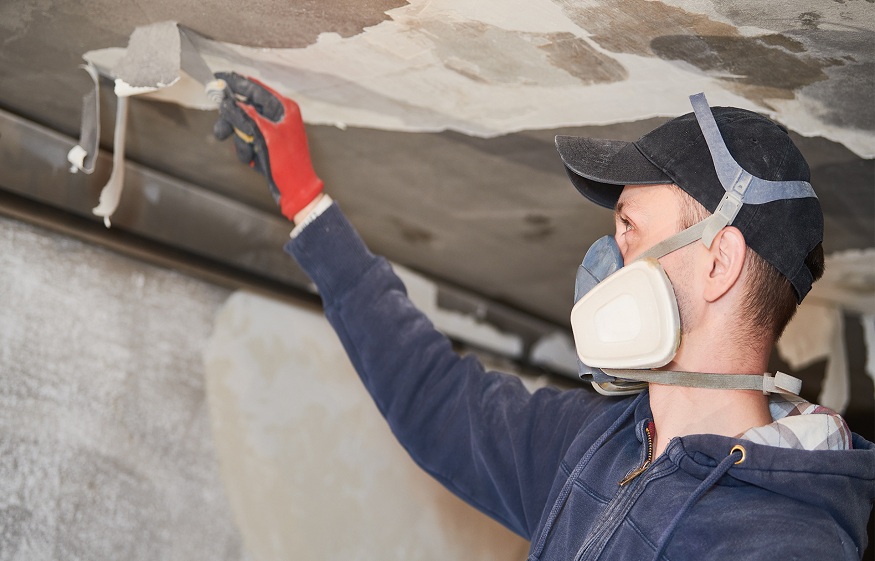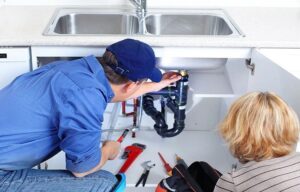Comprehensive Strategies For Efficient Fire Restoration

Understanding the Fire Damage Landscape in Fort Worth
The Unique Challenges of Fire Restoration
Fire restoration in Fort Worth poses unique challenges that demand both technical expertise and emotional intelligence. The multifaceted nature of fire damage includes not only the visible destruction of physical property but also hidden issues such as smoke, soot, and water damage from firefighting efforts. Restoration professionals must be adept in addressing all these aspects. These experts often face situations where structural integrity is compromised, which awakens fears about the safety of inhabitants. Navigating the emotional landscape of homeowners who have either lost beloved belongings or faced dislocation from their residences requires a thoughtful approach that combines empathy with efficiency.
Furthermore, Fort Worth’s climate can exacerbate situations where fire has occurred. Constant shifts in humidity and temperature can lead to rapid degradation of structural materials, making timely intervention essential. The challenges in fire restoration are compounded by the need to comply with strict local regulations and codes. This requires close collaboration with city authorities and environmental agencies to ensure that restoration work meets execution standards while safeguarding the health of local ecosystems, particularly after a fire event can release harmful chemicals into the air and nearby bodies of water. Thus, understanding these unique challenges becomes paramount for both homeowners and restoration experts alike.
Common Causes of Fire Incidents in the Area
In Fort Worth, several common causes of fire incidents can significantly impact the community. One prevalent cause is electrical malfunctions. Whether from outdated wiring or improperly installed appliances, electrical fires can ignite without warning, posing a substantial threat to residential and commercial buildings. Similarly, the use of heating equipment, particularly during the colder months, is another significant contributor to fire incidents. Homeowners often neglect maintenance on their heating systems, leading to failures that can ignite flammable materials in close proximity.
Cooking fires also rank high among the causes of fire emergencies. A momentary lapse in attention while cooking can quickly lead to flames consuming kitchens and, in severe cases, spreading throughout the home. Other contributors include outdoor grilling mishaps, particularly during the summer months, when people flock outdoors to enjoy barbecues. The Fort Worth area’s natural landscapes, with its often dry conditions and wind patterns, can turn a small grill fire into an out-of-control wildfire, threatening homes and lives across communities.
The Importance of Local Knowledge in Restoration
The significance of local knowledge in fire restoration cannot be understated. Fire restoration in Fort Worth requires a deep understanding of the region’s architecture, as homes can vary significantly due to their historical context and the materials used. Local experts know which construction techniques are common and how they respond to fire damage, allowing for a more tailored and efficient restoration strategy that respects the individuality of each property.
Moreover, local restoration teams are typically familiar with the specific environmental and climatic factors that can exacerbate fire damage, such as humidity levels affecting moisture in the air post-fire. They are also informed about local regulations, zoning laws, and well-established relationships with city inspectors and environmental agencies—invaluable assets that facilitate a smoother restoration process. Knowledge about local wildlife and vegetation is equally vital; for instance, understanding the area’s indigenous plant life can inform decisions about debris removal that minimizes ecological impact. It is this depth of local knowledge that ultimately ensures a cohesive, respectful, and efficient recovery process for Fort Worth residents.
Crafting a Proactive Fire Restoration Plan
Assessing Your Property’s Vulnerabilities
A proactive fire restoration plan begins with a thorough assessment of your property’s vulnerabilities. Homeowners must proactively identify risks associated with their specific residence. This includes understanding how construction materials react to fire, assessing the placement of electrical systems and appliances, and recognizing potential fire hazards in landscaping. For instance, if your home is near brush or dry foliage, it’s crucial to establish a defensible space that can repel flames.
This vulnerability assessment should extend beyond the physical dwelling to encompass lifestyle factors, such as daily routines that may inadvertently increase the risk of fire, like frequent kitchen usage without supervision. Mandatorily, conducting regular safety audits that involve checking smoke detectors, ensuring fire extinguishers are functional, and providing fire safety training for all household members can significantly mitigate risk. By exploring these aspects systematically, homeowners can develop a robust fire restoration plan that preemptively addresses vulnerabilities rather than merely reacting to them.
How to Create an Emergency Action Plan
Creating an effective emergency action plan is an integral component of a comprehensive fire restoration strategy. This plan should outline clear procedures to follow in the event of a fire, ensuring that all household members understand their responsibilities and roles during emergencies. Firstly, the plan must include designated escape routes from each room in the home. It is imperative that these routes are clear and accessible at all times and that family members practice evacuating them regularly.
Additionally, communication plays a vital role in an emergency action plan. Families should establish a predetermined meeting point outside of the home where everyone can gather after evacuating. This prevents confusion and ensures that all members are accounted for. Not only does this contribute to safety during a fire, but it also streamlines the restoration process, as emergency responders can focus on the task at hand rather than worrying about missing individuals.
Updating this action plan with modern technology can further enhance its effectiveness; consider using tools such as mobile apps that remind family members of safety procedures. Furthermore, plan out contingencies for pets and valuable documents—these extra steps are critical in mitigating stress during a crisis. Comprehensive emergency action plans don’t just save lives; they can significantly reduce property damage and enhance the efficiency of any subsequent restoration efforts.
Building a Relationship with Fire Restoration Experts
Developing a relationship with knowledgeable fire restoration experts is crucial for both preparedness and efficient recovery from a fire incident. Initiating conversations with local restoration companies before a fire occurs can result in substantial advantages during a crisis. Establish rapport and discuss detailed restoration procedures, timelines, and costs, which will provide you with a clear understanding of what to expect should disaster strike. This eases the emotional burden during an already stressful time and ensures that your expectations align with their capabilities.
Furthermore, fostering these relationships allows homeowners access to invaluable knowledge about preventive strategies, such as the latest advancements in fire suppression systems or effective landscaping techniques that can enhance your home’s fire resistance. Many restoration companies offer training or workshops on personal home safety, which might be worth attending. They can also provide insight into potential risks specific to the Fort Worth area, helping homeowners to further fortify their properties against fire threats.
Innovative Techniques in Fire Damage Recovery
The Role of Technology in Restoration
In recent years, the role of technology in fire damage recovery has evolved dramatically, allowing for more efficient and effective restoration solutions. Advanced scanning technologies can now identify areas of fire and smoke damage that are not immediately visible to the naked eye, ensuring that restoration teams do not overlook critical areas that could lead to future complications.
Additionally, restoration projects now often leverage high-efficiency particulate air (HEPA) filtration systems designed to remove microscopic particles from the air. These systems are vital for improving indoor air quality post-fire and reducing the likelihood of respiratory complications for returning residents. Techniques such as thermal imaging allow professionals to see heat flux hotspots within walls and ceilings, which not only indicates the extent of damage but also guides the necessary targeted interventions that can significantly reduce restoration times.
Moreover, emerging technologies in fire-resistant materials and coatings can provide long-lasting protection for properties subjected to the risks of fire. Implementing these advancements into restoration efforts helps to fortify structures against future threats, providing peace of mind for homeowners and a marked improvement in long-term property value.
Eco-Friendly Solutions for Fire Recovery
As awareness of environmental issues has grown, so has the commitment to integrating eco-friendly solutions into fire recovery efforts. Utilizing biodegradable cleaning products and green construction materials during the restoration process can minimize the environmental footprint of recovery operations. This is particularly relevant in Fort Worth, where community consciousness about sustainability is burgeoning.
One effective strategy is the use of green building materials, which often include repurposed or recycled items that not only reduce waste but can also improve energy efficiency. For instance, companies can incorporate sustainable insulation or flooring options that contribute to both ecological preservation and energy savings. Additionally, sourcing materials locally can support the regional economy while lowering transportation emissions.
Consulting with environmental remediation specialists ensures that restoration practices do not inadvertently release toxins into the environment. Such experts can guide homeowners toward strategies that comply with best environmental practices, allowing for the safe removal of hazardous materials released during a fire. By prioritizing eco-friendly solutions, homeowners in Fort Worth can pursue a restoration journey that not only focuses on rebuilding but also emphasizes the importance of safeguarding the environment for generations to come.
Restoration vs. Reconstruction: Making the Right Choice
When faced with fire damage, homeowners often find themselves grappling with the critical decision of whether to restore their property or undertake full reconstruction. Restoration is generally preferred for properties where the damage is manageable and cosmetic repairs can render the home safe and livable. It involves cleaning, sanitizing, and repairing aspects of the home affected by fire and smoke, often preserving the original structure and features that give the home its unique character.
Conversely, reconstruction may be necessary in situations where the damage is severe, compromising the building’s structural integrity or safety. This may entail completely rebuilding sections of the home and possibly re-evaluating its design to better withstand future fire threats. Homeowners should consult with experienced restoration professionals to assess the extent of the damage and receive thoughtful recommendations. Factors such as insurance coverage, personal emotional attachments to the property, and long-term plans for the home should all be considered when making this important decision.
Navigating Insurance and Financial Aspects of Fire Restoration
Understanding Your Insurance Policy for Fire Damage
Understanding your insurance policy in relation to fire damage is fundamental to navigating the aftermath of a fire incident successfully. Policies can significantly vary, so it’s critical for homeowners to thoroughly read and comprehend the terms and conditions of their coverage, particularly the sections addressing fire damage. Many policies may provide coverage for structural damage, contents, living expenses during restoration periods, and even debris removal costs.
Homeowners should also be aware of the differences between actual cash value versus replacement cost coverage, as the latter generally allows for a more comprehensive recovery of losses. Factors like deductibles and claim limits should also be clearly understood—navigating these correctly can be the difference between a smooth recovery process and a stressful financial burden. Regular policy audits and evaluations can ensure coverage stays aligned with the homeowner’s current needs and property value.
Strategies to Maximize Your Claims
Maximizing insurance claims following a fire incident is a critical aspect of the restoration process, and homeowners can adopt several strategies to strengthen their positions. Firstly, meticulous documentation of damages should begin immediately after a fire. Photographs, videos, and written inventories can serve as indispensable evidence when filing claims. Comprehensive records detailing all damaged property, including receipts and appraisals of valuable items, feed into the claims process, ensuring insurers properly assess losses.
Engaging with a knowledgeable public adjuster can also be beneficial, as these professionals specialize in navigating insurance claims and can advocate for the policyholder to ensure that they receive fair compensation. Additionally, maintaining open lines of communication with the insurance company is essential; this involves promptly responding to inquiries and providing any requested documentation to expedite the claims process. By proactively managing the claims process, homeowners stand to increase their likelihood of obtaining the maximum coverage required for restoring their homes.
Budgeting for Unexpected Restoration Costs
Fire restoration can often come with unexpected costs that catch homeowners off guard. As such, it’s essential to establish a comprehensive budget that takes these potential challenges into account. This budget should prioritize known expenses, such as immediate cleaning and restoration efforts, structural repairs, and debris removal while also including a contingency fund reserved for unanticipated expenditures.
Common unexpected costs can arise from hidden damage, such as smoke infiltration in walls or concealed water damage resulting from firefighting efforts. These may only be discovered after initial assessments once work begins. Accordingly, working closely with a restoration expert who can provide insights into common issues encountered in fire recovery can help shape realistic budget expectations.
Another aspect to consider is the potential need for temporary housing or increased living expenses during the restoration process. Homeowners must factor in these living costs, particularly in unforeseen delays, ensuring the budget is reflective of real-life scenarios. With careful planning and an adequately structured budget, homeowners in Fort Worth can navigate the financial complexities of fire restoration and embark on a successful path to recovery.
FAQ
Question: What are some common misconceptions about fire restoration? – Many people believe that fire restoration is just about cleaning up soot and smoke damage. In reality, it often involves complex assessments of structural integrity, hidden water damage, and compliance with local regulations, necessitating specialized knowledge and skills.
Question: How can homeowners ensure their property is fire-resistant before an incident occurs? – Homeowners can enhance their property’s fire resistance by incorporating fire-retardant materials in construction, maintaining defensible spaces around the home, and properly managing landscaping to reduce potential fire fuel sources.
Question: What steps should be taken immediately after a fire incident? – After a fire, ensure the safety of all individuals and contact emergency services if needed. Avoid entering the property until it has been deemed safe by authorities. Begin documenting damages for insurance purposes as soon as possible.
Question: Are there specific local regulations that impact fire restoration in Fort Worth? – Yes, fire restoration in Fort Worth is subject to local building codes and regulations that govern safety, environmental protection, and health standards. Collaborating with licensed local professionals ensures compliance with these regulations.
Question: How can homeowners prepare psychologically for the aftermath of a fire? – Preparation can involve discussing emotional responses with family members, seeking support from community resources, and acknowledging the potential stressors associated with recovery. Relying on trusted professionals can also help alleviate anxiety during the restoration process.
Question: What types of eco-friendly materials are recommended for fire restoration? – Eco-friendly materials include bamboo flooring, recycled insulation, and low-VOC paints. These materials not only reduce environmental impacts but can also contribute to improved indoor air quality.
Question: How can technology improve the fire restoration process? – Technology enhances fire restoration through tools like thermal imaging to detect hidden heat sources, advanced air filtration systems to improve air quality, and software for efficient project management and documentation.
Question: Is it necessary to hire a public adjuster for filing insurance claims? – While not mandatory, hiring a public adjuster can be beneficial as they are experienced in navigating complex insurance claims and can advocate for homeowners to ensure they receive a fair settlement for their losses.
Useful Resources
- American Red Cross
- National Fire Protection Association (NFPA)
- Federal Emergency Management Agency (FEMA)
- Sparky.org (Fire Safety for Kids)
- International Fire Protection Alliance
- International Association of Fire Chiefs
- Occupational Safety and Health Administration (OSHA)
- U.S. Environmental Protection Agency (EPA)







